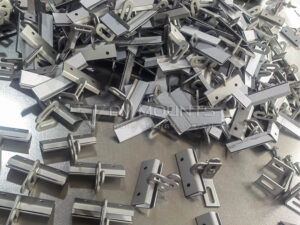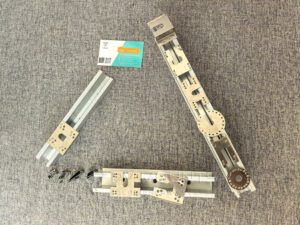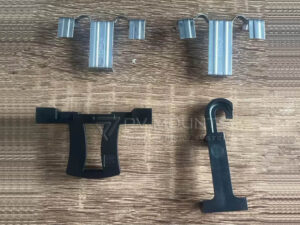Clima este un factor critic care afectează eficiența și longevitatea sistemelor de panouri solare. Temperaturile extreme, nivelurile variabile ale luminii solare și precipitațiile pot influența performanța panourilor solare. Prin înțelegerea acestor efecte climatice, proprietarii de locuințe și întreprinderile pot lua decizii în cunoștință de cauză cu privire la tipurile de sisteme de montare solare care vor rezista cel mai bine condițiilor locale de mediu.
Tehnologiile de montare a panourilor solare pe acoperiș au avansat semnificativ pentru a se adapta la o gamă largă de materiale pentru acoperișuri și cerințe structurale. De la rafturi staționare la sisteme reglabile și de urmărire, fiecare tehnologie oferă beneficii specifice adaptate diferitelor condiții climatice. De exemplu, sistemele de urmărire pot fi ideale în zonele cu lumină solară variabilă, ajustându-se pe parcursul zilei pentru a maximiza absorbția energiei solare.
Tabla de conținut
Climate calde și aride
Provocări și soluții
În climatele calde și aride, panourile solare se confruntă cu temperaturi ridicate și radiații UV intense, care pot accelera degradarea materialelor și reduce eficiența. Pentru a combate aceste probleme, este esențial să se selecteze materiale care sunt rezistente la deteriorarea UV și la dilatarea termică. Sistemele de montare la înălțime pot promova, de asemenea, o mai bună circulație a aerului în jurul panourilor, contribuind la menținerea acestora la o temperatură mai scăzută și la îmbunătățirea performanței lor.
Cele mai bune practici pentru instalare
Instalarea panourilor solare în regiunile aride necesită o planificare strategică pentru a maximiza durata de viață și eficiența acestora. Panourile trebuie instalate cu o ușoară înclinare pentru a facilita fluxul de aer și a reduce acumularea de praf și nisip, care pot întuneca panourile și le pot reduce randamentul. În plus, utilizarea unor materiale de montaj deschise la culoare poate ajuta la reflectarea unei părți din căldura soarelui, menținând temperaturile panourilor mai scăzute.
Climate reci și cu zăpadă
Considerații speciale pentru sarcina de zăpadă
Panourile solare din climatele reci și înzăpezite trebuie să fie suficient de robuste pentru a rezista la greutatea zăpezii acumulate. Designul sistemului de montare trebuie să asigure că zăpada poate aluneca ușor de pe panouri, prevenind deteriorarea și menținând producția de energie în timpul lunilor cu zăpadă. Suporturile înclinate facilitează de obicei acest lucru, deoarece permit zăpezii să cadă de pe panouri în mod natural.
Materiale și tehnologii recomandate
Pentru instalațiile din climatele mai reci, este esențial să se utilizeze materiale care pot rezista ciclurilor de îngheț-dezgheț fără să se deterioreze. Panourile și sistemele de montare trebuie selectate pentru capacitatea lor de a funcționa optim la temperaturi scăzute. De exemplu, panourile acoperite cu negru pot absorbi mai multă lumină solară și pot ajuta la topirea zăpezii reziduale, menținând astfel eficiența grupului solar pe tot parcursul iernii.
Climate tropicale și ploioase
Gestionarea umidității și a precipitațiilor
În climatele tropicale și ploioase, umiditatea ridicată și ploile torențiale frecvente reprezintă un set unic de provocări pentru panourile solare. Aceste condiții pot duce la acumularea de umiditate, care ar putea afecta în mod negativ componentele electrice ale sistemului. Este esențial să se utilizeze sisteme de montare impermeabile sau rezistente la apă, care să ridice panourile suficient deasupra acoperișului pentru a preveni orice retenție de apă și a facilita uscarea rapidă.
Sisteme solare de acoperiș ideale pentru vreme umedă
Cele mai bune sisteme de montare solare pentru climatele tropicale sunt cele concepute cu soluții integrate de drenaj care ajută la canalizarea apei de ploaie departe de panouri. Aceste sisteme prezintă de obicei unghiuri înclinate pentru a favoriza scurgerea apei și pentru a preveni acumularea de resturi, care pot bloca lumina soarelui și reduce eficiența. Materialele utilizate în aceste sisteme trebuie, de asemenea, să fie rezistente la coroziunea cauzată de nivelurile ridicate de umiditate.
Climate temperate
Versatilitate în variațiile sezoniere
Climatele temperate, caracterizate prin vreme moderată, dar cu variații sezoniere distincte, necesită sisteme de montare solare care se pot adapta la unghiurile de soare și la condițiile meteorologice variabile pe tot parcursul anului. Sistemele de montare reglabile sunt deosebit de benefice în aceste medii, deoarece pot fi modificate pentru a maximiza expunerea la soare în timpul diferitelor anotimpuri, optimizând astfel producția de energie.
Sfaturi privind eficiența energetică
Pentru a maximiza eficiența energetică în climatele temperate, este important să întrețineți periodic panourile solare. Aceasta include ajustarea înclinării panourilor de cel puțin două ori pe an pentru a se alinia cu poziția soarelui în timpul solstițiului de vară și de iarnă. În plus, asigurarea faptului că panourile sunt curate și lipsite de resturi va contribui la menținerea unei absorbții optime a luminii solare.
Inovații tehnologice privind montajul solar pe acoperiș
Tehnologii emergente pentru climatele extreme
Domeniul tehnologiei solare evoluează continuu, cu inovații menite să sporească eficiența și reziliența sistemelor solare în condiții climatice extreme. O astfel de inovație este reprezentată de panourile solare bifaciale, care captează lumina soarelui din ambele părți ale panoului, sporind producția de energie fără a necesita spațiu suplimentar. Un alt progres este reprezentat de sistemele de urmărire solară care ajustează poziția panourilor solare pe tot parcursul zilei pentru a urma traiectoria soarelui, maximizând captarea energiei.
Studii de caz privind soluții inovatoare
Aplicațiile din lumea reală ale acestor tehnologii oferă exemple clare ale eficacității lor. De exemplu, o fermă solară din deșertul Mojave utilizează suporturi de culoare deschisă cu reflexie ridicată care reduc semnificativ temperatura panourilor și cresc eficiența. Un alt exemplu este cel din Scandinavia, unde instalațiile solare echipate cu sisteme automate de topire a zăpezii au menținut o productivitate ridicată chiar și în timpul lunilor grele de iarnă.
Sfaturi de instalare în funcție de climă
Personalizarea instalațiilor în funcție de climă
Fiecare climă necesită o abordare personalizată a instalării sistemelor de montaj solar pentru a asigura eficiență și durabilitate maxime. De exemplu, în zonele cu vânt, este esențial să se consolideze sistemele de montare pentru a preveni eventualele deteriorări. În climatele cu ninsori abundente, este recomandabil să poziționați panourile solare la unghiuri mai abrupte pentru a facilita desprinderea naturală a zăpezii.
Măsuri de siguranță și precauții
Siguranța este primordială atunci când instalați panouri solare. Aceasta include asigurarea faptului că toate sistemele de montare sunt bine ancorate și că instalațiile electrice sunt conforme cu codurile locale de siguranță. Utilizarea materialelor neconductoare poate preveni, de asemenea, pericolele electrice. Inspecțiile periodice pentru verificarea uzurii sau a potențialelor pericole sunt esențiale pentru menținerea siguranței și eficienței instalației.
10 sfaturi pentru o performanță optimă
Menținerea unei performanțe optime a sistemelor de montare a energiei solare pe acoperiș în diferite condiții climatice implică câteva bune practici:
Curățare regulată: Păstrați panourile solare curate de praf, zăpadă și resturi pentru a menține o eficiență ridicată.
Inspectați pentru coroziune: Este deosebit de important în zonele umede sau de coastă pentru a preveni degradarea componentelor.
Actualizați componentele sistemului: Actualizați piesele mai vechi cu tehnologii noi, mai eficiente, pe măsură ce acestea devin disponibile.
Monitorizați producția de energie: Verificați periodic producția de energie pentru a vă asigura că sistemul funcționează la capacitate maximă.
Reglați unghiurile de înclinare în funcție de anotimp: Modificați unghiul de înclinare al panourilor în funcție de anotimpuri pentru a capta lumina solară maximă.
Asigurați o ventilație corespunzătoare: Preveniți supraîncălzirea prin asigurarea unei bune circulații a aerului în jurul panourilor.
Utilizați feronerie de montaj de calitate: Investiți în accesorii de montaj durabile, de înaltă calitate, care pot rezista condițiilor locale de mediu.
Implementați monitorizarea inteligentă: Utilizați sisteme de monitorizare pentru a urmări performanța și a identifica rapid problemele.
Respectați reglementările locale: Asigurați-vă că toate instalațiile sunt conforme cu codurile și reglementările locale privind construcțiile.
Consultați experții: Consultați periodic experți în energie solară pentru a vă menține sistemul actualizat și eficient.
Concluzii și întrebări frecvente
Gânduri finale și bune practici
Optimizarea montajului solar pe acoperiș pentru diferite clime nu numai că sporește eficiența panourilor dvs. solare, dar le și prelungește durata de viață. Urmând sfaturile prezentate și adaptându-vă abordarea la provocările unice prezentate de climatul local, vă puteți asigura că instalația dvs. solară rămâne productivă și durabilă de-a lungul anilor. Rămâneți întotdeauna informați cu privire la cele mai recente tehnologii solare și standarde industriale și nu ezitați să solicitați sfatul experților atunci când vă planificați și vă întrețineți sistemele solare.
Răspunsuri la întrebări frecvente
Q1: Panourile solare pot fi eficiente în climatele foarte noroase?
R: Da, panourile solare moderne sunt destul de eficiente, chiar și în condiții de luminozitate scăzută. Utilizarea de panouri special concepute pentru astfel de medii poate spori eficiența.
Q2: Cât de des ar trebui să-mi înlocuiesc sistemul de montaj solar?
R: Cu o întreținere corespunzătoare, un sistem de montaj solar de înaltă calitate poate dura 20 de ani sau mai mult. Inspecțiile regulate vor ajuta la determinarea momentului în care sunt necesare înlocuiri.
Q3: Există mărci specifice care sunt recomandate pentru climatele aspre?
R: Sunt de preferat mărcile specializate în tehnologii de înaltă durabilitate și rezistente la schimbările climatice. Cercetările și consultările de specialitate pot ajuta la alegerea mărcii potrivite.
Q4: Cum știu dacă panourile mele solare au nevoie de întreținere?
R: O scădere vizibilă a producției de energie sau deteriorarea fizică a panourilor sunt indicii clare că este necesară întreținerea.
Î5: Care este cel mai bun unghi pentru montarea panourilor solare?
R: Unghiul optim variază în funcție de locația geografică și clima locală; un specialist în energie solară vă poate oferi cele mai bune sfaturi în funcție de situația dumneavoastră specifică.













